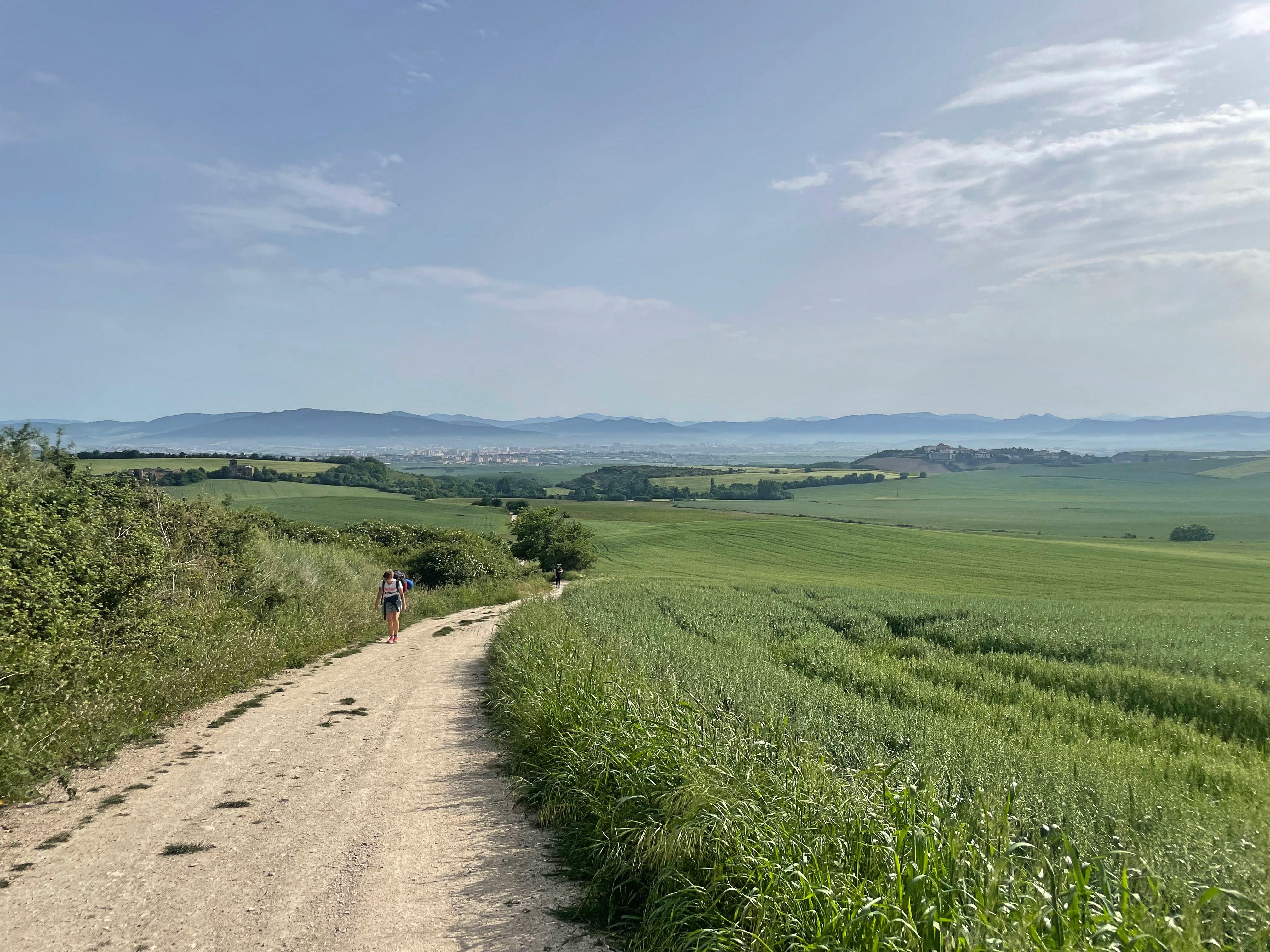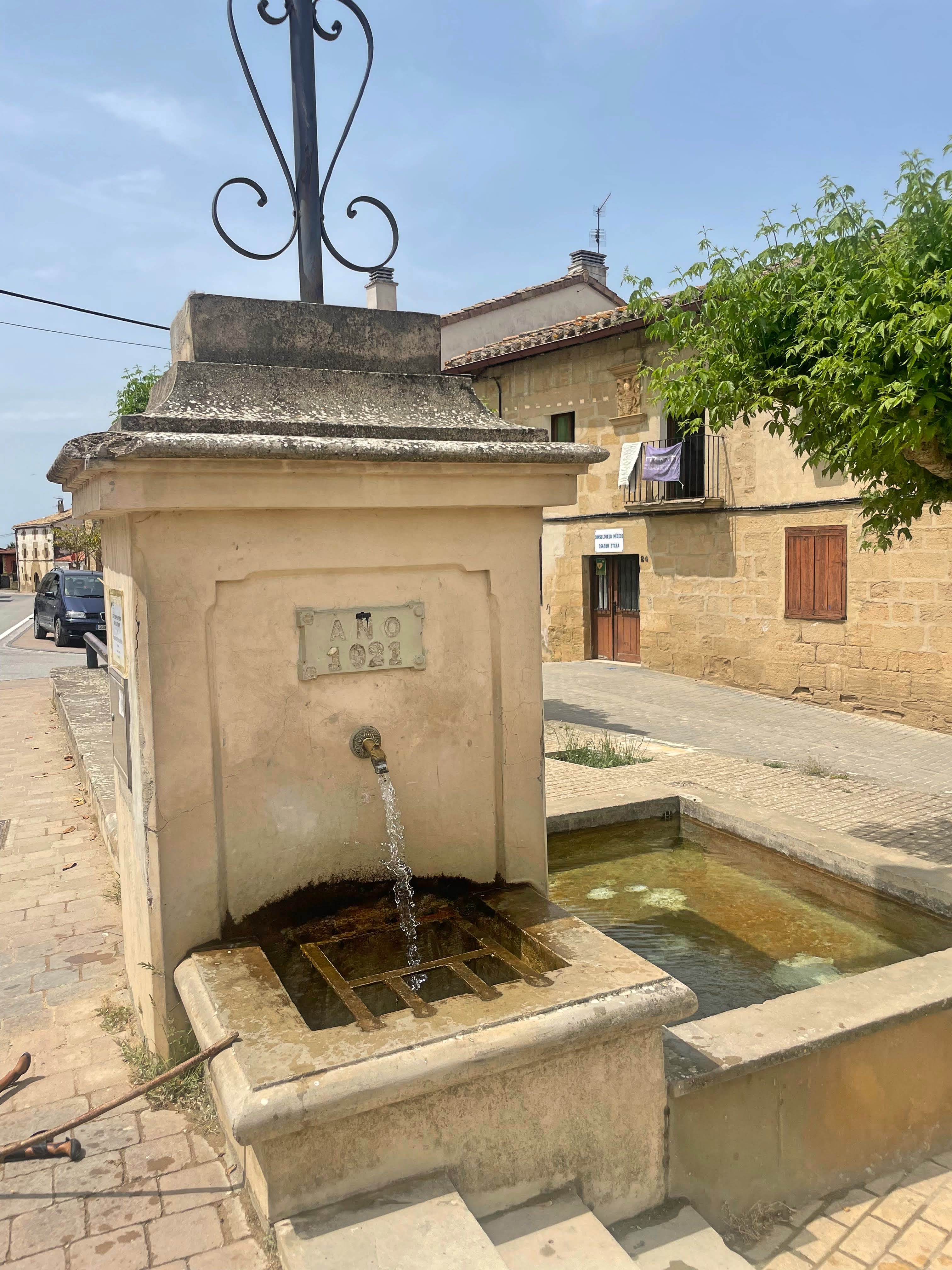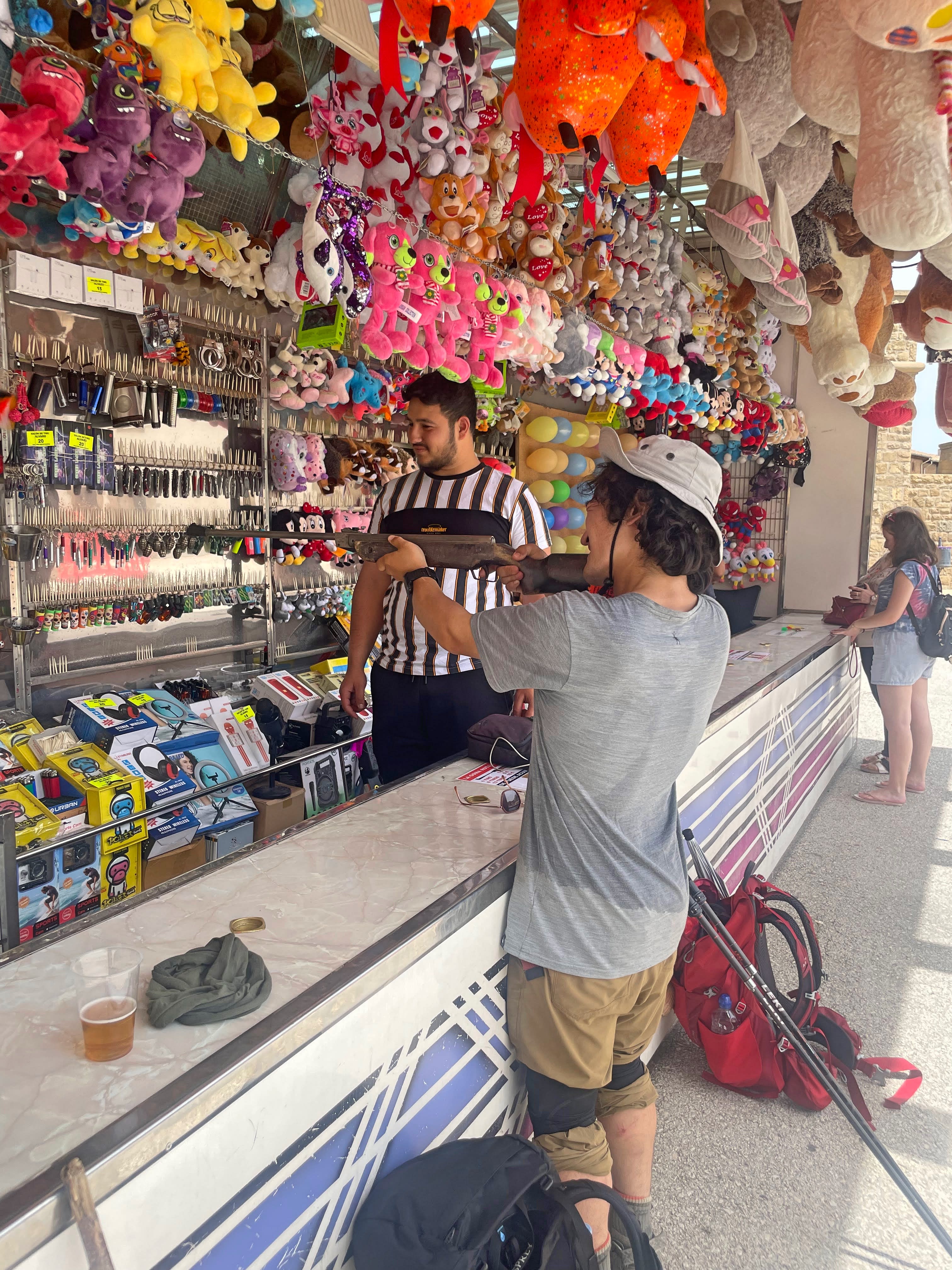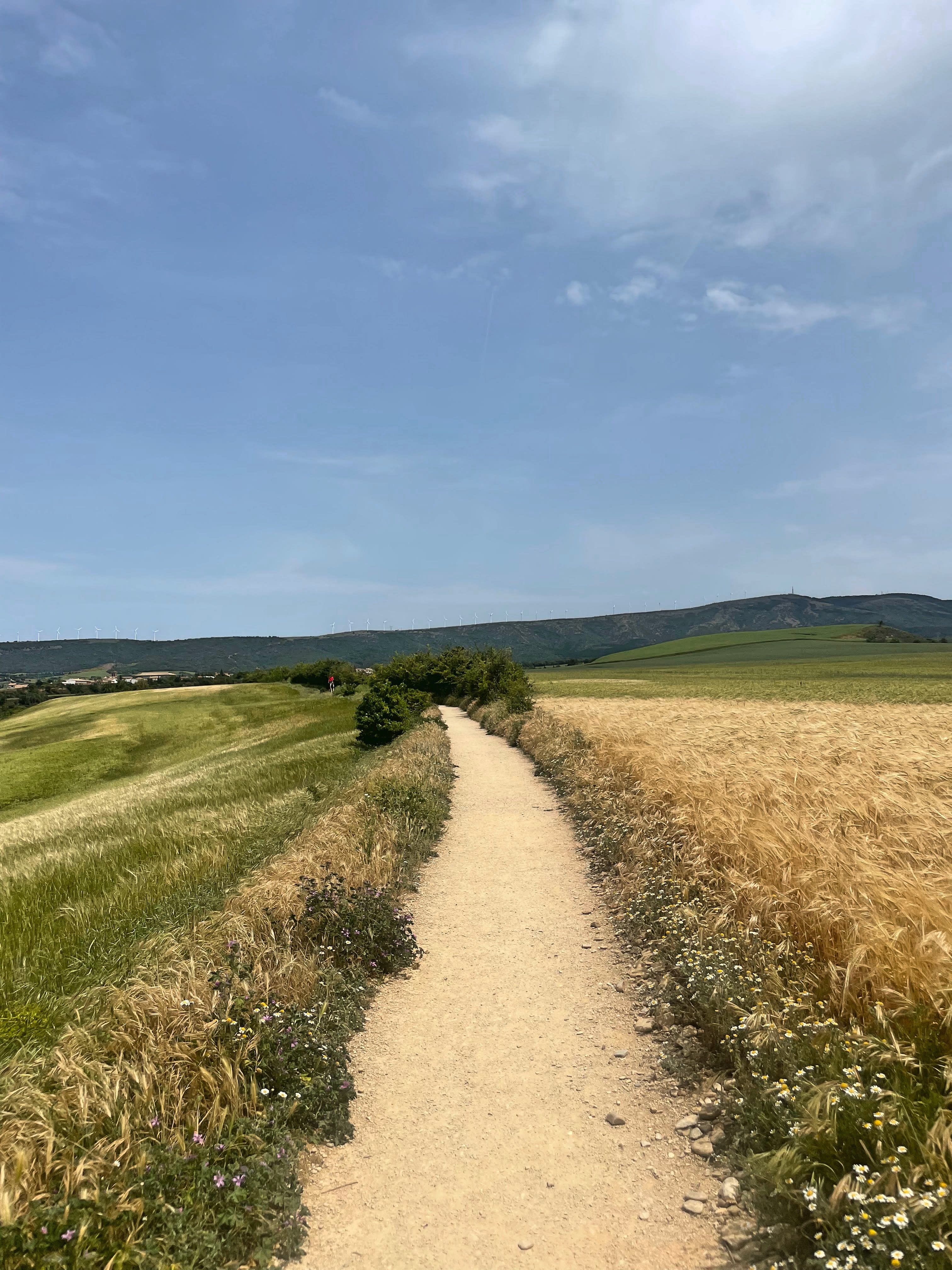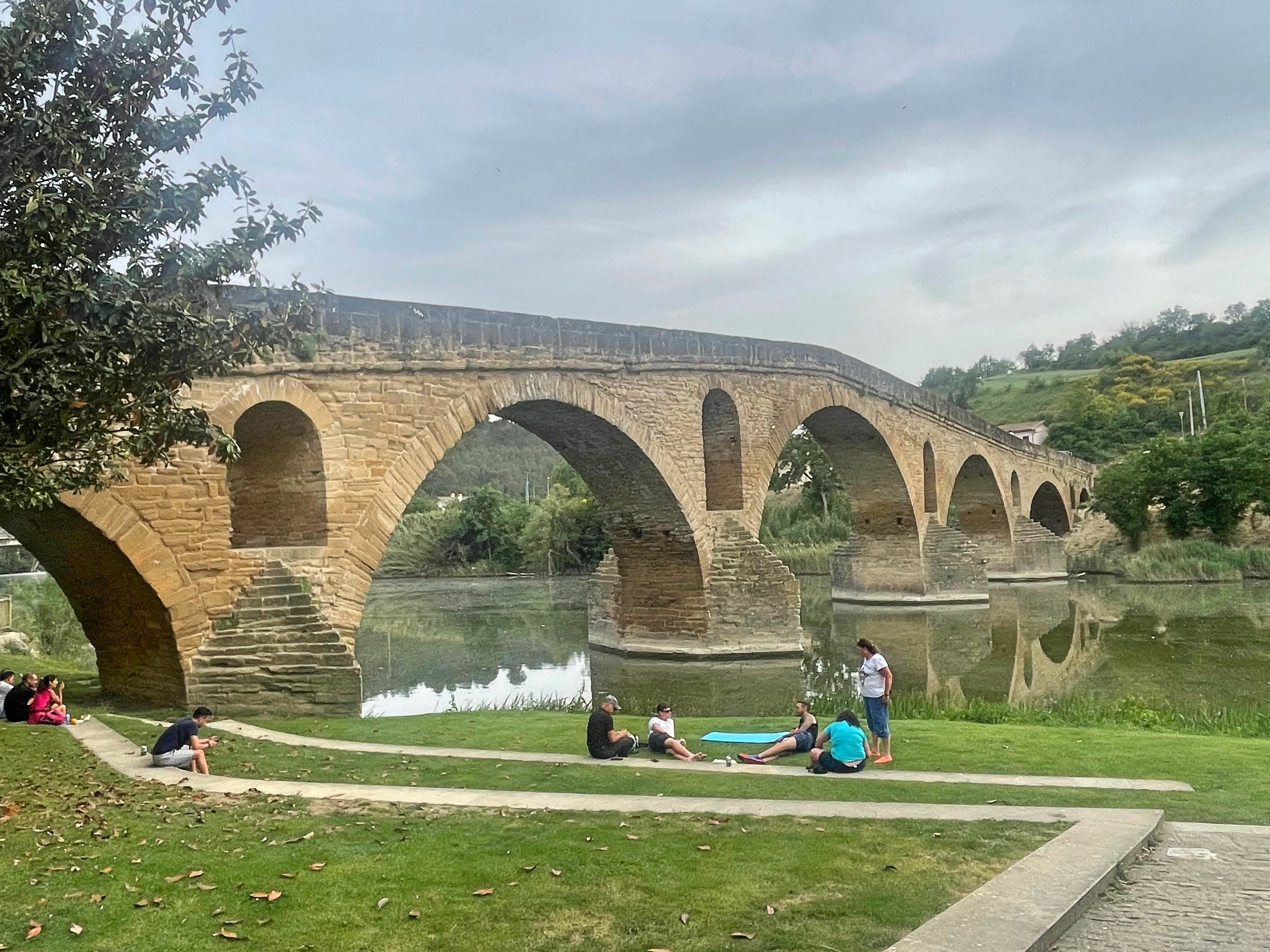We walked from the outskirts of the town to the center of Pamplona in the dawn and passed through the old city through the medieval walls watching the sunrise. The whole town was asleep except for the pilgrims.
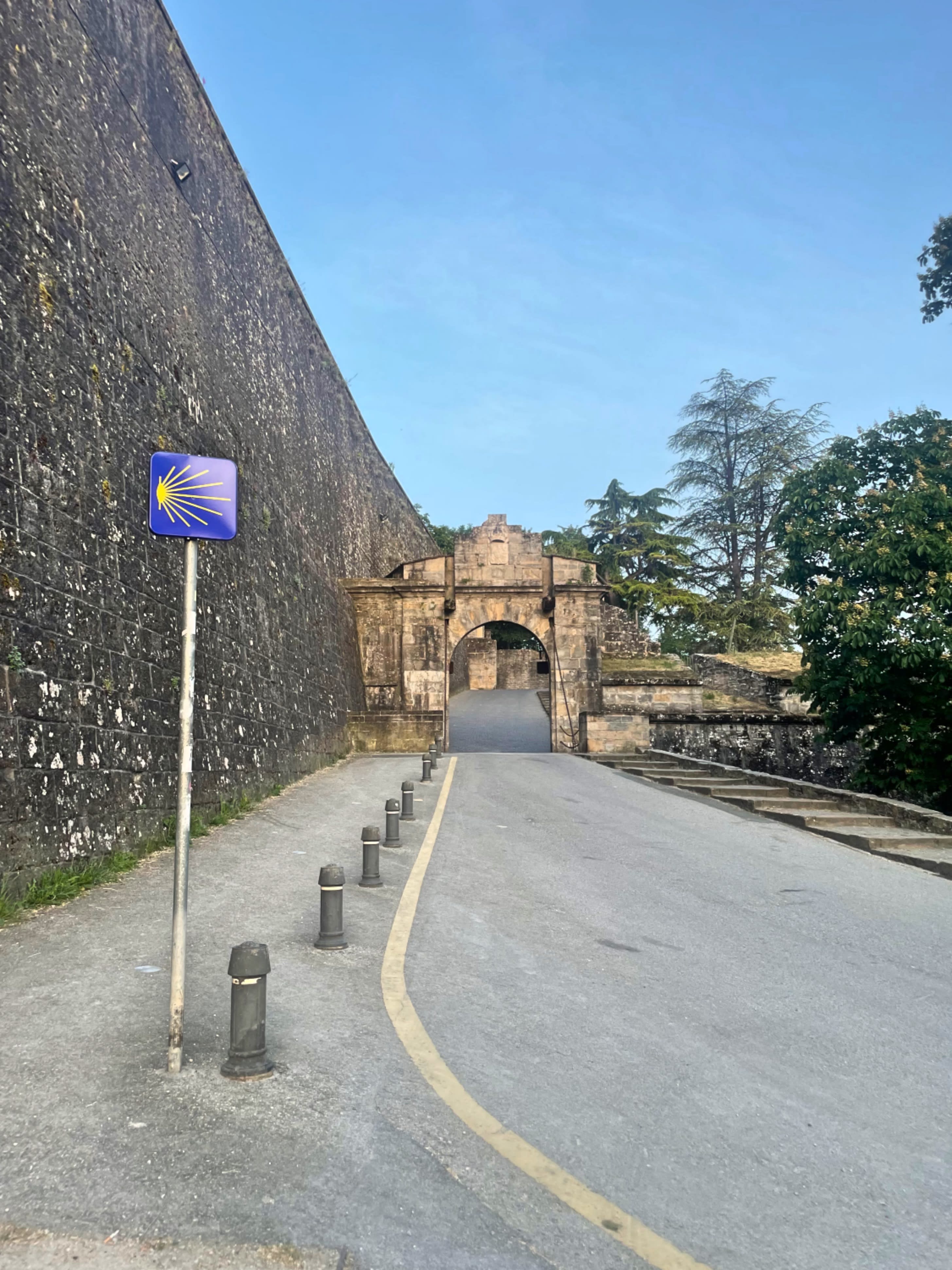 City wall of Pamplona,a city built in 74 BC by the Roman military. The Basques calls it Iruña, meaning 'the city'
City wall of Pamplona,a city built in 74 BC by the Roman military. The Basques calls it Iruña, meaning 'the city'As we walked out of the city, I saw a massive wheat field splashed with red poppies.
The group, my original Camino Buddies plus Heewon, Raj, and the Spaniards, all met up for a brief break for breakfast before we charged up to the summit of Alto del Perdón, the hill of forgiveness. On top of the windy hill is a sculpture describing the history of the Camino. According to the book, The Lore of the Camino de Santiago, by Jean Mitchell-Lanham,
“The sculpture exhibits a small history of pilgrims and the pilgrimage…through various stages of development, from the beginning in the Middle Ages up to the present day, in the form of a procession. Of the twelve pilgrims, the first pilgrim appears to be searching for the route and symbolizes the beginning of interest in the pilgrimage. Next is a group of three that depicts the growth or rise in popularity of the Camino. These three are followed by another group depicted as merchants or tradesmen on horseback that symbolize the medieval era of merchants hawking their wares to the pilgrims. Spaced away from them is a solitary figure that characterizes the decline in pilgrimages due to political, religious, and social unrests from the mid-fourteenth to the mid-twentieth centuries. At the very end of the procession are two modern-day figures depicted to show the renewed interest and rise in popularity of the pilgrimage in the late twentieth century.”
Camino de Santiago started when the Christians from the Middle Ages walked to Santiago de Compostela from their doorstep to repent of their sins. The pilgrimage became an important sign of solidarity during the Reconquista, and the pilgrims were protected by the kings of Spain. As we walked into the cathedrals and churches along the Camino, I saw the paintings depicting the Saints and laypeople, often with very stern looks or even in agony. What were all the sins they committed that convinced them to come to walk thousands of kilometers? Why did the Catholic Church ascribe meaning to this walk that put people whose lives were full of suffering through more pain?
Even though I shaved off a lot of weight from my pack, my left knee still hurt. It was still okay for the uphill, but the long rocky downhill was killing me. After we came down the hill, we took a little break, dipping our feet in the cold bath next to the water fountain. I could see the first blister on my pinky.
Finally, we arrived at Obanos, and a local festival was happening. We couldn’t pass the cheap beer and the shooting gallery. I shot a rifle for the first time. I wasn’t sure I had hit the target, but the guy gave me a wristband. Sadly, it wasn’t something I would proudly wear.
Late afternoon, we finally arrived at Puente La Reina, the city named after a bridge built by Queen Muniadona, wife of King Sancho III, in the 11th century. It was very hot, and we decided to take a break at the first bar in the town. We saw Russ, a guy from the UK who looked sad as his daughter went home after walking with him to Pamplona. He kept buying us beers and drank so much that we had to escort him to his bed.
We left the bar to finish the day, and I was pretty drunk. How can you say no to free beers? In Spain, the Sun peaked at around 5 o’clock, and we progressed very slowly. I met Andrew for the first time taking a short break, and when he asked me how I was, I said, “I am pretty drunk.” I walked up the hill to the Albergue, squeezing the last bit of sweat. Since I sent away all my clothes but two, I had to hand wash my clothes as soon as I got out of the shower.
Puente La Reina is a town that existed for thousands of years for pilgrims, and every corner of the town was overflowing with pilgrims. The most annoying thing about Spain, especially in the smaller town, was the dinner started at 7pm. Most restaurants stop serving food around 3pm, and the only available food is some tapas and paella. I opted to eat paella since I wanted to go to bed early, which was not that good. My high bar for Spanish paella was shattered.
When the day was over, I looked at my watch, showing me I had walked more than 50,000 steps. I broke my personal record again. Can I keep walking like this for the next 30 days? My left knee was still sore.
One rule I made for my Camino is always to carry my backpack, and when I am not well, I would throw stuff away from the pack or take rest days rather than send it with the courier service. The backpack symbolizes the baggage I carry in my life. I can’t send my life’s baggage away. I can only reduce it or wait to regain the strength to carry it. I put some tiger balm all over my knee and went to bed, pep-talking myself that the pain would go away tomorrow and I would complete this quest.
